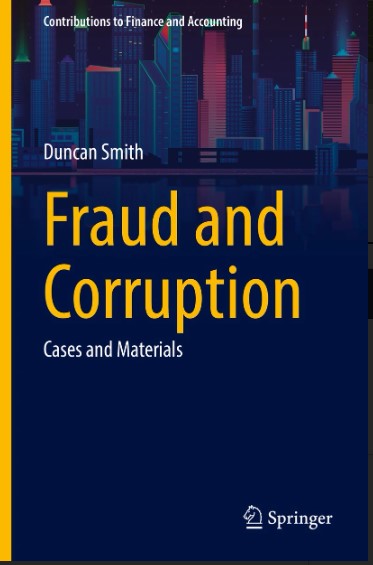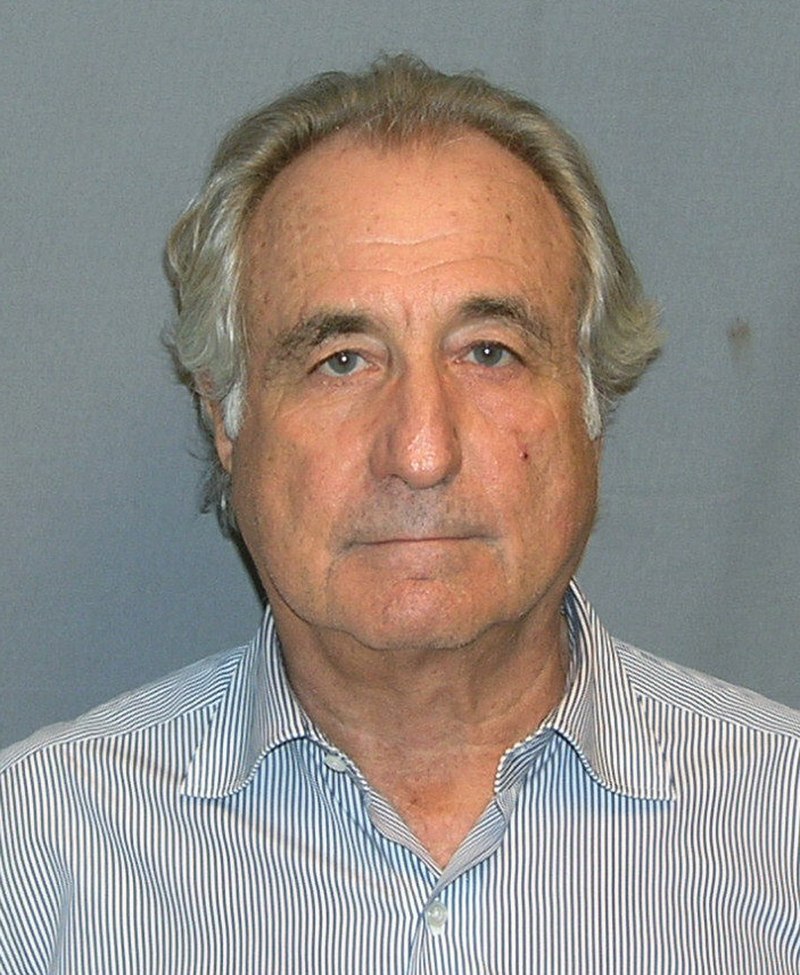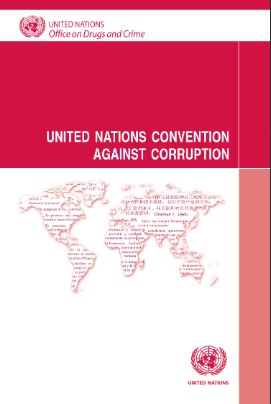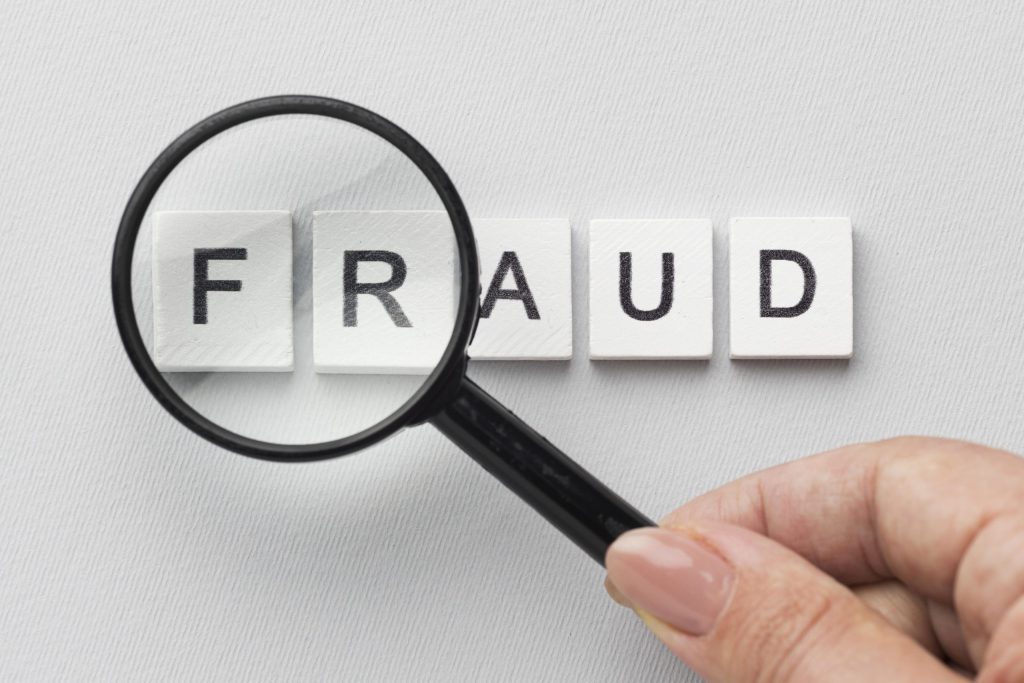Duncan Smith, Fraud and Corruption: Cases and Materials (2022)

To those of us working on the front-line, Duncan Smith’s latest book Fraud and Corruption: Cases and Materials (Springer, 2022) is an invaluable resource. As Deputy Head of Fraud Investigations at the European Investment Bank (EIB) in Luxembourg, Smith is well-placed to write on the challenges of identifying, and responding to, the pandemic of white-collar crime that infects institutions, individuals, and global markets in the first quarter of the 21st century. Here is a fine addition to legal literature and a meticulous analysis of financial crime of value to students, academics, and professionals who want to understand and address the increasingly sophisticated problem of fraud and corruption, that blights financial houses and markets worldwide. With his thorough research, insightful analysis, and engaging presentation, Smith inducts experts, managers and general readers into the artistry and complexity of white-collar crime, while indicating a deep awareness of the legal challenges faced by those who seek to identify and indict offenders.

The book begins by establishing a solid foundation of knowledge about the nature and scope of fraud and corruption, describing the approach taken by the UK’s Serious Fraud Officeand National Crime Agency, and the US Department of Justice and FBI. Drawing on his professional expertise, Smith also examines the major Multilateral Development Banks’ (MDBs) definition and application of key terms such as ‘fraud’ and ‘corruption’ and the issues surrounding them.
Throughout the book, Smith defines pivotal concepts and provides readers with a clear sense of the legal and ethical dimensions of a wide range of offenses. His ability to simplify complex legal jargon is impressive – and immensely useful!
One of the standout features of the book is its use of real-life case studies to illustrate key points. In the first part of the book, Smith examines major cases from several industry sectors. He looks at high-profile cases such as the American financier Bernie Madoff (1931-2021), who master-minded the world’s largest Ponzi scheme, the cross-selling scandal at Wells Fargo Bank that first emerged in 2011 and has cost the company to-date an estimated ca. $3bn., and the accounting fraud that bankrupted the energy company Enron in 2001. Smith also looks at lesser-known cases like the young American biotechnic entrepreneur Elisabeth Holmes (b. 1984), who was convicted of fraud (along with her Theranos company’s COO Ramesh ‘Sunny’ Balwani) in 2018 for claiming to have created a technology to test blood from finger-prick samples. Estimated to be worth an eye-watering $9bn. in 2015, exposure of the fraud caused Theranos’ value to plunge to zero in 2016 with Holmes indicted and cited by Forbes magazine among ‘The World’s 19 Most Disappointing Leaders.’ The prospect of unimaginable wealth, the satisfaction of outsmarting monitoring agencies and the curse of progressive compromise have, it seems, driven great and small to contribute to the proliferation of the white-collar crimes Smith studies.

Smith’s careful dissection of real-life cases provides the reader with chilling insights into the range of factors that contribute to fraud and corruption, viz., lax regulatory oversight, systemic flaws, personal weakness, etc. These examples also reveal the horrendous consequences of white-collar crimes on their individual and institutional perpetrators, and on society as a whole.
A key strength of Smith’s work is its breadth of scope. Malpractices are named and tracked here across a vast array of sectors, from corporates to governments, individuals to public bodies, all of which underscore the detrimental effect of white-collar crime on societies, economies and, crucially, trust in public systems. Smith provides a rich tapestry of cases in a range of contexts to ensure his writing is relevant and his challenge broad and clear.

To my mind, one of the book’s most commendable aspects is its meticulous attention to the underlying issues that foster fraud and corruption. Root causes are identified, viz. a weak regulatory framework, lack of transparency, deliberate obfuscation, ethical lapses, all of which serve as breeding grounds for dishonest behavior. By addressing these systemic vulnerabilities, Fraud and Corruption: Cases and Materials goes beyond documenting the problem to promoting more rigorous reflection on, and action to create, preventive measures and resilient institutions.
Throughout the narrative, Smith emphasizes the significance of accountability and the role of both individuals and institutions in curbing fraudulent practices. By analyzing case studies that involve not only the perpetrators but also those who enable(d) such behavior through negligence or complacency, the book challenges readers to question their own moral compass and societal responsibility. It underlines how the fight against fraud and corruption necessitates collective effort and unwavering commitment to upholding integrity in the public square.

Rather than pointing the finger at one country or community, the book highlights the global nature of fraud and corruption. Like the problem it addresses, the work transcends geographic boundaries, showcasing how fraud and corruption exist and operate at an international level. Through this, readers gain insight into the shared challenges they face and the urgent need for international cooperation in combatting these often insidious, culturally acceptable, crimes.
Smith’s book is divided into two main sections. As we have seen, the first part looks at the character of white-collar crimes and specific cases. In Section II, Smith provides the text of the UN Convention Against Corruption, the OECD Convention on Combating Bribery of Foreign Public Officials in International Business and the EIB’s Anti-Fraud and Whistleblowing policies. The book also includes examples of corporate responses to the threat of fraud and corruption (e.g., the policies adopted by Coca Cola, Apple and Tesla) and lists illustrative films. Throughout, the style is accessible and aim clear. The book’s systematic approach means readers can track specific issues such as detection, investigation, prosecution, and prevention, and study legal frameworks, international treaties, regulations, court decisions, etc. Though it is impossible to be comprehensive, Smith’s book is compellingly thorough.

Part of the strength of Smith’s book – in addition to its readability and relevance – is that it provides a clear theoretical basis for understanding the nature of the problems it addresses and tough, practical, proven, strategies for detection and prevention of fraud and corruption. In this, Smith highlights the value of strong corporate and institutional governance, robust internal controls, and a systemic culture of integrity and personal responsibility. He also points to the vital role government agencies, law enforcement officers, and international collaboration have in naming, and responding to, white-collar crimes. By examining preventive measures and enforcement mechanisms, the book equips readers with the knowledge and tools needed to navigate a complex, grim, sometimes dangerous, and ever-changing landscape.

Duncan Smith’s Fraud and Corruption: Cases and Materials profiles an issue that demands urgent attention. He presents a compelling argument for collective action for anyone concerned at any level with building a more just, equitable and transparent society.
Andrea De Tomasso, Senior Officer in Italian Law Enforcement (Financial Police) – Guest Reviewer
